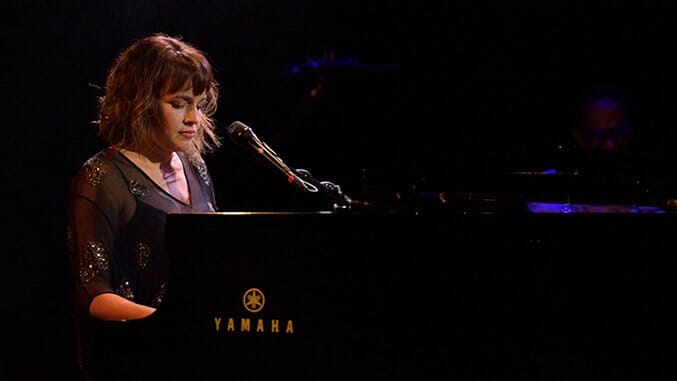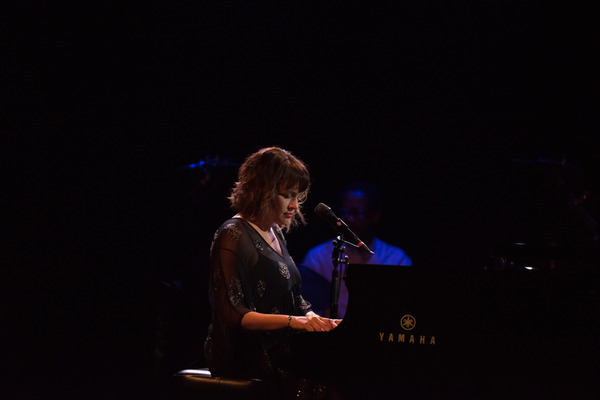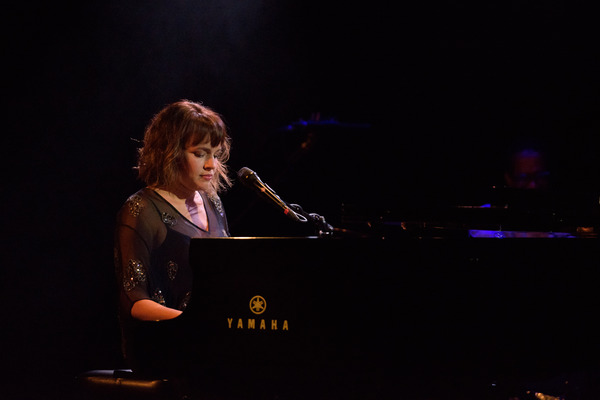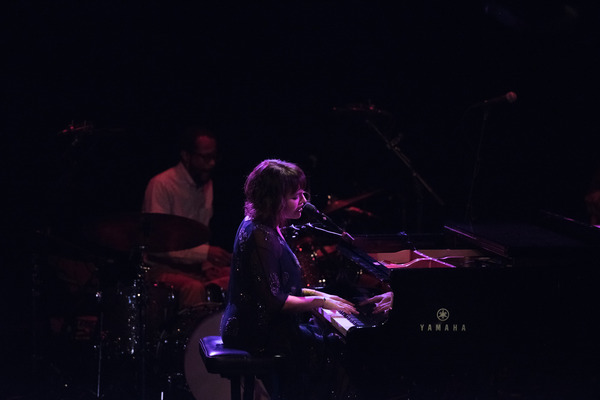Norah Jones’s NYC Residency Reveals the Best Contradictions of Her Career
The singer/songwriter took over New York's intimate Le Poisson Rouge this week.

The basement of Le Poisson Rouge, the 350-seat music club located in the heart of the East Village, is very dark. Defined by black walls and blue lighting, it’s difficult to see anything beyond the gleaming piano onstage. Those willing to shell out for the two item minimum required to score a table squint over their menus, holding them close to the flickering candles that provide the only reprieve from the near-consuming darkness. When Norah Jones strode onstage last Monday, preparing to perform the second of five shows as part of a residency at the venue this week, the spotlight hit her sparkling dress and dazzling smile, immediately ensuring that Jones would be the only source of illumination for the evening.
It may seem odd that the nine-time Grammy award winning singer-songwriter would play one of these small shows—much less five. But Jones has always been an elusive character steeped in contradiction. Her records have made pendulum swings from one genre to another, spanning from her jazzy 2001 debut album Come Away With Me, all the way to 2012’s Danger Mouse-produced pop noire Little Broken Hearts, and back again to her jazz roots with her most recent release, Day Break.

Norah Jones at Le Poisson Rouge by DeShaun Craddock
-

-

-

-

-

-

-

-

-

-

-

-

-

-

-

-

-

-

-

-

-

-

-

-

-

-

-

-

-

-

-

-

-

-

-

-

-

-

-

-










































